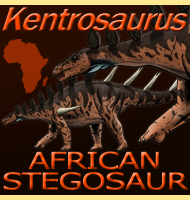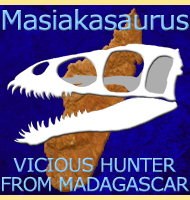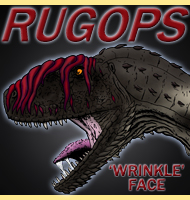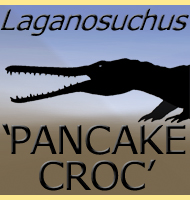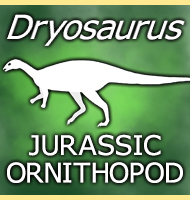


Pegomastax
Name:
Pegomastax
(Strong jaw).
Phonetic: Peg-o-mas-taks.
Named By: Paul C. Sereno - 2012.
Classification: Chordata, Reptilia, Dinosauria,
Ornithischia, Heterodontosauridae, Heterodontosaurinae.
Species: P. africana (type).
Diet: Herbivore?
Size: Uncertain due to lack of remains, but
estimated at around 60 centimetres long.
Known locations: South Africa - Elliot Formation.
Time period: Hettangian to Sinemurian of the
Jurassic.
Fossil representation: Partial skull, mandibles
and predentary.
When
the description of Pegomastax was first publically
released news
headlines of ‘Dracula dinosaur’ and ‘Fanged vampire parrot’
soon flooded the internet. Pegomastax however
seems to be one of the
heterodontosaurid dinosaurs, and although some palaeontologists have
speculated that these kinds of dinosaurs used their teeth to eat small
prey like lizards and insects, others including Paul Sereno, the
palaeontologist who described Pegomastix are of the
opinion that
heterodontosaurids were mostly if not exclusively herbivores. This
means that the enlarged teeth of Pegomastax that
look like vampire
fangs were probably used for a combination of display as well as
practical tools for uprooting plants.
The
holotype specimen of Pegomastax (the fossils that
the genus is
described from) were first collected in a 1966-67 expedition,
yet it was not until 1983 that they first received any further
attention when Sereno noticed them as being unusual looking. It would
be almost another thirty years before Sereno was finally able to get
round to studying these fossils due to other work commitments. To be
fair though this work included heavy research and contributions to the
discoveries of other African paleofauna of the Mesozoic including the
predatory theropod dinosaurs Carcharodontosaurus
and Suchomimus,
the
specialised sauropod Nigersaurus,
the giant crocodile Sarcosuchus,
as well as the ‘boar croc’ Kaprosuchus
among many others. Also,
the type species of Pegomastax was originally
written as P.
africanus. However, africanus is feminine whereas the
word mastax
is actually masculine, something that led to the type species name
being modified to africana, in order to be grammatically correct.
Further reading
Taxonomy, morphology, masticatory function and phylogeny of
heterodontosaurid dinosaurs - P. C. Sereno - 2012.
----------------------------------------------------------------------------
Random favourites
 |
 |
 |
